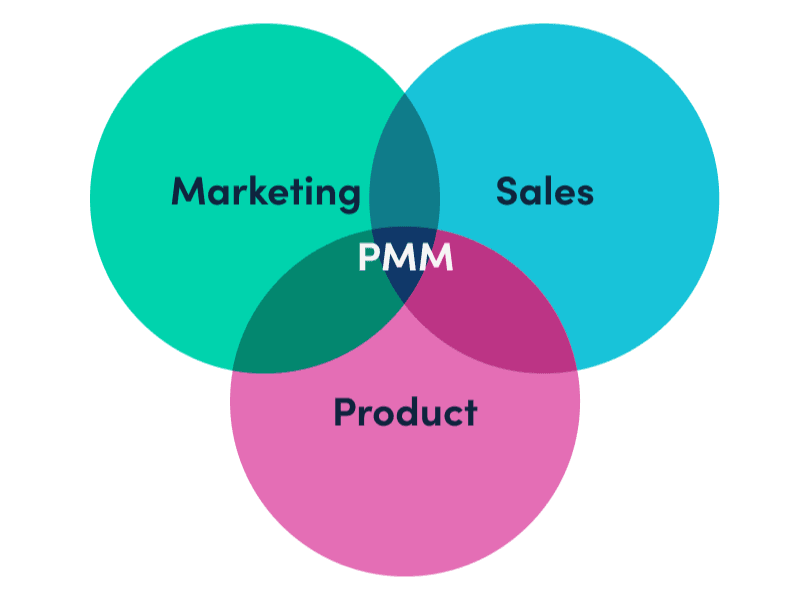Updated: January 15, 2026- 14 min read
A lot of big companies, as they scale, they get distracted. That's why I always tell the team to really focus and put the customer at the heart of it.
— Yi-Wei, CPO at Talabat, on The Product Podcast
For years, companies have relied on the art of marketing, so much so it was the core of the company’s identity. Think back to the 60s, 70s, 80s, or even your favorite episode of Mad Men — marketing was the powerhouse behind most successful brands. It shaped consumer behavior, of course, but interestingly, it also dominated business strategy.
Fast forward to today, and the spotlight has shifted. Now, it’s all about the product.
Agile, Scrum, and other methodologies have emerged. Products and their development teams are now at the center of innovation. Engineers and product builders have all eyes on them — think Jobs, Zuckerberg, and Musk. They drive the narrative in a world where the product is at the epicenter.
So, how have companies adapted to this shift?
With product marketing, of course. The new setup acts as a bridge between a product and a market. It’s no longer just a branch of sales or a ploy, but a strategic function neatly tied to a product.
What’s being built should resonate with the market's needs—that’s where Product Marketing Strategy steps in to overhaul the old ways.
Ready to Master The Art of Product Launches?
Get an in-depth understanding of the critical elements that make a launch successful with our free Product Launches Micro-Certification (PRLC)™! Whether you're a seasoned pro or just starting, this is your chance to dive deep into iconic launches, understand foundational elements, and craft exceptional go-to-market plans.
Enroll now for free
What is a Product Marketing Strategy?
A Product Marketing Strategy guides how a product is positioned, promoted, and sold in the market. It connects the dots between the product itself and the customers who need it. It covers every aspect of the product's journey — from development to launch and beyond. A powerful, well-executed strategy is what makes the difference between the companies that everyone looks up to as the best examples of product marketing and the rest.

Here’s what it involves:
Understanding the Market: This starts with market research. You need to know who your customers are, what problems they face, and how your product can solve those problems better than any alternative.
Product Positioning and Messaging: Once you know the market, you can position your product effectively. Positioning defines how your product is different and better. Messaging then communicates this difference clearly to your audience, focusing on the value your product offers.
Go-to-Market (GTM) Strategy: This is your plan for introducing the product to the market. It includes choosing the right channels (like social media, email, or events), setting the right price, and crafting the launch campaign. The GTM strategy is about getting the product in front of the right people at the right time.
Sales Enablement: This involves equipping your sales team with the tools and information they need to sell the product effectively. It could be creating product demos, sales decks, or detailed product personas to guide their conversations with potential customers.
Product Analysis: Finally, a product marketing strategy isn’t complete without a plan for measuring success. This involves tracking key metrics like customer acquisition cost, conversion rates, and overall revenue to understand what’s working and what’s not. Based on this data, you can refine your approach over time.
A well-crafted product marketing strategy ensures that your product not only reaches its target audience but also resonates. Often, a thin line separates a product’s strengths from market needs. The product marketer’s job is to find that string, pull, and maximize the chances of success. Without it, even the best products can fail to gain traction.
In simple terms, a product marketing strategy is about making sure your product is seen, understood, and loved by the people who need it most.
7 Steps to Build a Winning Product Marketing Strategy
Grasping the product marketing techniques is essential for success. Whether you're new to the field or a seasoned pro, this part covers eight key steps to build a winning marketing strategy for selling a product.
By following these product marketing best practices and strategic product marketing approaches, you’ll learn how to position your product effectively- Moreover, you’ll be well-equipped to execute a powerful launch and continuously optimize your efforts.
1. Deep Dive into Market Research
Any product-related team should start by understanding the market inside and out. This includes the Product Marketing team — especially those who are building a marketing strategy for a new product. It means researching the target audience, analyzing competitors, and identifying market trends.
Look for gaps in the market — problems that aren’t being solved effectively. Use surveys, interviews, and data analysis to get a clear picture of who your customers are, what they need, and how they currently solve their problems.
This research forms the foundation to consolidate the product and its positioning. A skilled Product Marketing Manager should be able to engage with product teams and demonstrate the following:
This is what the product is
This is what our customers actually need
Here’s the gap we need to cross to meet those needs
This person should dig deep to know exactly how to bridge this gap — balancing the necessary product updates with precise adjustments to product positioning.
A great example of a company known for its meticulous approach to market research is Amazon. Amazon is renowned for its deep dive into understanding customer needs and market gaps.
They consistently use data analysis, customer surveys, and user feedback to shape their product and service offerings. From developing Amazon Prime to launching new products like the Kindle or Echo, they strategically research consumer behaviors, identify unmet needs, and fine-tune their products and marketing strategies accordingly.
2. Set Clear KPIs and OKRs
Before diving into the details, establish clear Key Performance Indicators (KPIs) and Objectives and Key Results (OKRs) for your product marketing strategy.
KPIs are the measurable outcomes that will track your progress, like customer acquisition cost, conversion rates, or market share. OKRs are broader objectives paired with specific, measurable key results that guide your strategy and align your team’s efforts.
By setting these metrics early, you’ll have a clear vision of what success looks like and how you’ll measure it.
Google is renowned for its consistent use of OKRs (Objectives and Key Results) as a foundational framework for setting goals and measuring performance. Since its early days, as Workpath’s success story goes to show, Google has used OKRs to align teams and drive focus on measurable outcomes across the organization. This approach allows Google to stay agile, set ambitious goals, and track progress transparently across teams, from engineering to product development.
Product OKR Template
Use this Product OKR template to set and track your OKRs (Objectives and Key Results). Align your team’s daily tasks with product and company strategy!
get free template
3. Define Your Product’s Unique Value Proposition (UVP)
With your market research and KPIs/OKRs in place, clarify what makes your product unique.
Your UVP is the specific benefit your product offers that sets it apart from competitors. It should answer the question: Why should customers choose your product over others?

In product marketing, a well-crafted UVP needs to provide the following:
Relevancy. Exactly how your product solves customers’ problems.
Quantified value. Deliver specific and measurable benefits.
Differentiation. Why your customers should buy from you and not from the competition.
Focus on the core problem your product solves, how it does it better, and the tangible benefits users will experience. This will guide your messaging and positioning.
Take Airbnb as an example. Their UVP focuses on offering unique, local experiences that go beyond just accommodation. While traditional hotels provide a standard stay, Airbnb connects travelers with hosts who offer authentic homes and sometimes local experiences.
Their UVP highlights the relevancy by solving the problem of impersonal travel. They provide quantified value through more affordable and diverse lodging options. Lastly, their differentiation is clear—they empower users to "live like a local" in over 100,000 cities worldwide, offering a unique, personalized experience that hotels can't match.
Free Value Proposition Canvas
Learn how to take user problems as the foundation of your solution and only build products that matter with our free Value Proposition Canvas!
Get Yours Now
4. Craft Clear Positioning and Messaging
Market positioning is the primary reason why the release of the first iPhone was so iconic. Three familiar devices that people cared about - an iPod, a phone, and an internet communicator - all merged into one.
— Mariana Abdala, VP Product at Product School, on The Product Manager Certification
With your UVP in hand, it’s time to develop positioning and messaging that truly connect with your target audience. Product positioning defines the space your product occupies in the market and in customers' minds, while messaging communicates this position clearly and effectively.
Positioning is about identifying where your product fits in the market. Consider these key points:
Understand Differentiators: What makes your product unique compared to competitors?
Customer Perception: How do you want customers to view your product—premium, budget-friendly, innovative?
Messaging then brings this positioning to life. Your messaging should:
Clearly communicate your UVP, addressing your audience’s key pain points.
Highlight the benefits that matter most to your customers.
Use simple, clear, and compelling language that speaks directly to your audience.
By following these steps, you create positioning and messaging that not only resonate with your audience but also reinforce your product’s place in the market.
5. Develop a Comprehensive Product Launch Plan
Your Product Launch Plan is the tactical execution of your overall product strategy. The goal is to create a coordinated effort that introduces your product to the market with maximum impact. That’s the sole reason why it’s so important for Product Marketers to understand the nuances and all the steps it involves:
Identify the Right Channels to Reach Your Audience: Choosing platforms like social media, email marketing, content marketing, and webinars where your target audience is most active. Planning a mix of organic posts, paid ads, and tailored messages to generate buzz and engage potential customers.
Set Clear Objectives and Key Dates: Key milestones should be outlined in the Product Launch Strategy, including teaser campaigns, content releases, and the launch date itself. Plan promotional activities like countdowns or early access offers and clearly assign responsibilities for each task.
Consider Your Pricing Strategy: Offer special launch pricing, discounts, or tiered pricing options to appeal to different customer segments. This can incentivize early adopters and cater to a broader range of buyers. Here, product marketers research market trends and customer preferences to inform decision-makers on pricing strategy.
Plan Distribution Channels: Ensure your product is available on major online platforms such as your website, e-commerce sites, or app stores. Product marketers collaborate with sales and distribution teams to ensure the product is available where target customers are most likely to purchase.
Monitor and Adjust: Product marketers track real-time analytics to monitor the performance of a launch. They adjust strategies as needed based on what’s working or not and collect feedback to identify any issues or opportunities for improvement.
Post-Launch Follow-Up: The goal is to ensure robust customer support to assist new customers and address any issues. Product marketers lead the ongoing engagement efforts, ensuring that customers remain satisfied and informed through continuous communication.
6. Enable and Empower Your Sales Team
Your sales team needs to be fully equipped to sell your product effectively. Product Marketing teams should provide them with detailed buyer personas, product demos, case studies, and objection-handling guides.
One thing creative teams do is create a sales playbook. It’s the visually enriched document that outlines key messaging, selling points, and competitive differentiation.
Regular training sessions and updates are also crucial, especially as new information or insights become available. The better prepared your sales team is, the more confident they’ll be in closing deals. After all, both teams are united in their goals.
Salesforce is one example of a company that doesn’t just talk the talk but walks the walk. They use their own tools and processes to enhance the productivity of the sales teams through strategic enablement initiatives.
They use their platform’s features, like Sales Cloud, to empower sales reps with real-time insights. This way, their sales reps can close deals faster and more effectively.
Salesforce has also launched a dedicated Salesforce on Salesforce program. They openly share their own internal sales enablement practices, demonstrating how they drive growth and success by equipping their teams with the right resources, technology, and skills.
7. Launch, Monitor, and Adjust
When you launch your product, monitor its performance closely. Use product analytics tools to track key metrics like website traffic, conversion rates, customer acquisition costs, and overall sales.
After the initial launch phase, evaluate the success of your strategy. Look at the data:
Did you meet your sales targets?
How did your product perform compared to competitors?
What was the ROI on your marketing efforts?
Use these insights to optimize your strategy moving forward. Focus on identifying which channels drove the most conversions and which messaging resonated most with your audience.
If certain tactics underperformed, analyze why and adjust your approach. For example, if email marketing has low engagement, consider testing different subject lines or content formats. Additionally, assess the feedback from your sales team and customers to uncover any gaps in the product or messaging that need to be addressed.
Ensure you have a structured process for gathering and reviewing this data regularly. It will allow you to make informed decisions that keep your strategy agile and responsive to market shifts.
Implement A/B testing for ongoing campaigns, and use customer feedback loops to refine product features or marketing messages. This approach will help you continuously improve your product marketing efforts, ensuring sustained success in a competitive market.
Ready to Master The Art of Product Launches?
Get an in-depth understanding of the critical elements that make a launch successful with our free Product Launches Micro-Certification (PRLC)™! Whether you're a seasoned pro or just starting, this is your chance to dive deep into iconic launches, understand foundational elements, and craft exceptional go-to-market plans.
Enroll now for free
What Differentiates Product Marketing from Other Types of Marketing?
Product marketing stands apart from other types of marketing by focusing on the specific promotion, positioning, and lifecycle management of a product.
While traditional marketing and ads build brand awareness and drive general engagement, product advertising is laser-focused on making a specific product tangibly successful. Here’s how it differs from other types of marketing:
Brand Marketing
Focus: Promotes the overall brand identity, values, and image.
Difference: While brand marketing builds long-term brand equity and recognition, product marketing zeroes in on a particular product’s unique value proposition (UVP) and how it meets the needs of its target audience.
Content Marketing
Focus: Creates and shares content to attract and engage a specific audience.
Difference: Content marketing is broad and can support various aspects of the brand, while product marketing uses content strategically to highlight specific product features, benefits, and use cases.
Digital Marketing
Focus: Utilizes channels like social media, PR, and email to engage an audience.
Difference: Digital marketing covers a wide range of activities aimed at driving traffic and conversions for the brand as a whole. Product marketing, however, uses these channels to drive awareness and sales for a specific product.
Inbound Marketing
Focus: Attracts customers by creating content and experiences tailored to them.
Difference: Inbound marketing focuses on drawing customers to the brand, often through educational content. Product marketing uses inbound strategies but specifically to educate and convert customers on the merits of a particular product.
Outbound Marketing
Focus: Pushes messages to the audience through traditional and digital advertising.
Difference: Outbound marketing is about reaching the masses with brand or promotional messages. Product marketing uses outbound techniques more precisely, targeting messages that highlight the product’s specific value to the right audience.
Social Media Marketing
Focus: Uses platforms to engage the audience, share content, and build community.
Difference: Social media marketing supports overall brand engagement. Product marketing leverages social media to promote product features, updates, launches, and customer success stories.
Email Marketing
Focus: Communicates with prospects and customers through email campaigns.
Difference: Email marketing can cover a broad range of topics, from newsletters to brand announcements. Product marketing uses email campaigns to deliver targeted product information, promotions, and personalized content that drives product adoption and customer retention.
Key Distinction: The Product-Centric Approach
Product marketing is inherently product-centric. It focuses on understanding the market, positioning the product, driving its adoption, and managing its lifecycle.
Unlike other marketing types that might touch on these areas more generally, product marketing is deeply integrated with the product development and sales teams. It ensures that the product not only reaches the market but thrives within it.
It’s about making sure the right product gets to the right audience at the right time with a clear message that resonates and drives action.
The Key to a Successful Product Marketing Strategy
A well-crafted product marketing strategy is vital for ensuring a product thrives in the market. From thorough market research to empowering your sales team, every step plays a crucial role in product success.
The most effective strategy considers not just the product's strengths but aligns them with the market's needs and timing. By continuously monitoring and adjusting based on data and feedback, your strategy will remain agile and adaptable. It will allow for sustained growth and success in the long haul.
Go-to-Market Certification
Create a winning GTM plan. Craft standout positioning, design messaging that sells, analyze markets, and drive post-launch momentum, all while leveraging the latest AI-first strategies.
Enroll now
Updated: January 15, 2026




